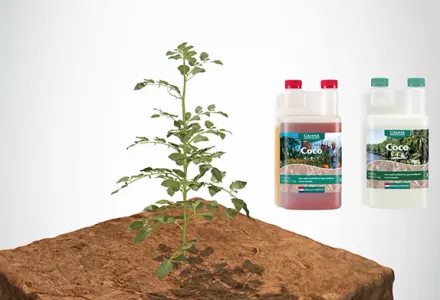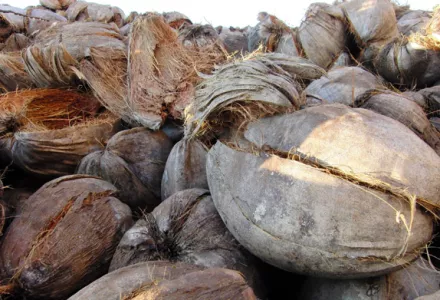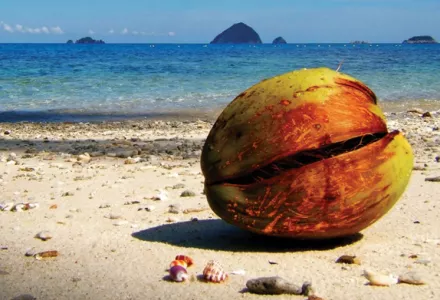There are very many different types of coco medium available on the market today, from many different manufacturers, and that number is constantly growing. Of course, all of them claim quality, but what constitutes a 'quality' coco medium product?
For any mediums used in container or bed gardening, the primary concern is consistency, from batch to batch, and from year to year. The medium must be free from weed seeds and pathogens that may stop the grower from achieving the best possible results. It also should have a stable physical structure and chemical composition. There is no difference between coco and any other medium in this regard, but achieving quality coco is a whole different issue.
Every medium has its own characteristics and qualities, and these need to be borne in mind when using them. Peat, for example, has a naturally low pH which inhibits most pathogen activity; but this changes when it is limed. Once the pH is raised, any micro-organisms in the peat, such as fungal spores, are primed for growth. Mineral soils – such as sand, clay or humus – usually contain pathogens and weed seeds. This means that they must be sterilized before use, either chemically (never the best option) or thermally (the easier and better option).
Other items such as coco or rice hulls (the by-products of other industries) must be broken down first to make them suitable for use as a growing medium (in order for them to fulfill the requirements of any medium: water retention, adaptable environment in the root zone, and plant support). So bearing in mind all these different requirements, how do we make a quality coco medium? The answer is from the moment the nut drops from the tree.
Benchmarks quality coco medium
The benchmarks for quality coco medium are:
- physical structure
- chemical stability
- free of weed seeds and pathogens
- consistency
Coco for the market is basically a mixture of three main components, which are differentiated according to their size – namely, chips, fibres, and grit (also dust or coco peat). The size of each particle, and its functions, will determine the aggregate structure of the medium. By 'structure', we not only mean the size of the particles, but also the amount and size of the pores that result in the mixture.
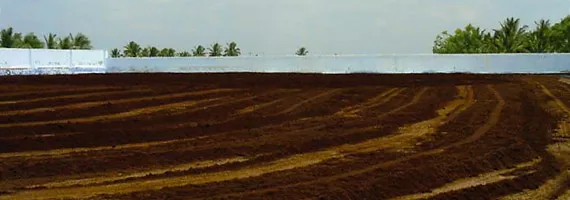
All organic materials will decompose, and of course this includes coco husks. The husks, which are the source of coco medium, are soaked in water for a long time and then the big and thicker fibres are removed. The smaller or broken fibres are left over, along with lots of grit or dust. This mixture is then left to decompose for a certain amount of time until it becomes usable.
Coconut plants and salty water
Coconut plants are able to use extremely salty water. To do this, the salt level inside the plant has to be greater than the salt level of the salty water, so that the water will be taken up by the plant cells through osmosis. However, high salt levels inside cells would kill the cell, so the plant concentrates the salts in the spaces between cells. As the coco plant matter decomposes, these salts are released. The amount of salts released is greatest when the material is freshest and slows with decomposition; however, decomposition should not be allowed to proceed too far because as the particles get smaller, they may become too small to be of use.
Coco and buffering
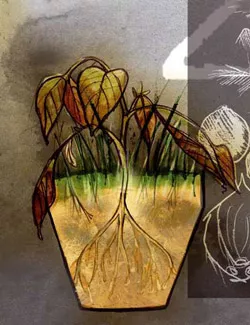
In order to permanently stabilize both the chemistry of the medium and its pH, an adjusting component (known as buffering) must be added prior to use. If the coco is to be mixed with peat or soil, this can be done when the initial fertilizer charge is mixed with the medium prior to planting, in order to fix the ratio of nutrients.
A weed is any plant that grows where people do not want it to grow. Weeds introduce variables into the growing equations that are not welcome. Weeds consume nutrients, act as hosts for pathogens and insects and rob the crop of light and water. Clean coco medium (or indeed any other medium) should never be a source of different plant species, nor should it be a source of pathogens.
However, when coco is thrown into giant piles, left to rot for a time and then packaged for use, this is a real opportunity for weeds and pathogens. Fungal spores are not affected by the use of gas and heat alone is not economically feasible, so there are only 2 ways to clean coco for use in growing:
- Sterilize the material by steaming it before packaging
- Ensure that the decomposing coco is not exposed to these issues and remains free of pathogens to start with. Steam sterilizing is much cheaper but, for coco, is not the optimum method.
The effect of cleaning coco
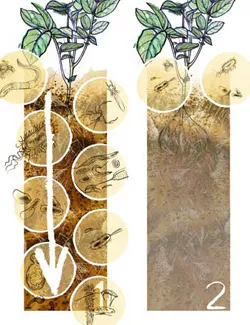
Cleaning the medium disrupts the natural ecological balance of the decomposing medium. Healthy medium has the correct concentrations of micro-life to continue breaking down organic matter in the right way while not affecting the nutrients applied for the plant. If all micro-life has been killed, on the other hand, general decomposers take over, stripping the medium of all its nutrients and out-competing the plants for the available nutrients.
Maintaining a balance is critical to the health of the medium and the crop. Simply dumping a heterogeneous mixture of ‘beneficial’ organisms into the medium does not work. One organism begins to break down fresh organic matter a little and then excretes the substrate for the next organism, a process which continues until the organic component changes completely.
Unless a second-step food source is available from the activity of the first organism, the second-step organism will starve and die. General decomposers use up most of the nutrient pool in the medium.
Of course, the plants also derive their sustenance from these pools but they are much slower to take up nutrients. The decomposers use up the nutrients before the plants get a chance. The best approach is therefore to control the crop from the beginning and prevent these types of problems before they happen. Sterilized coco medium is best avoided.
Looking for quality coco
Finally, consistency is critical to any grower. It ensures that there are no surprises for the grower when they start another crop. Any bag of coco medium should be the same as any other bag, at any time, now or in five years time. It should be the right age, have a known chemical and structural composition, and be free from unwanted pests and pathogens.
Coco medium is fairly easy to find, but quality coco medium is rather hard to find. A few rules of thumb:
- Look for a coco medium that has not been sterilized (particularly with steam) and has been protected since it came off the tree
- Find a coco medium that has stable structure and chemical properties because it has been treated appropriately
- Ensure that the medium is free from unwanted pests and pathogens but has not been destroyed in the process
- Most importantly, make sure it is consistent; the art of growing should not be a guessing game.
CANNA RHP quality mark, above and beyond
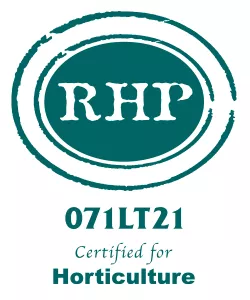
The RHP Foundation (Quality Mark for Substrates) is a well-known concept within the potting mix sector in the Netherlands for controlling substrates and raw materials. The inspection is not limited to the finished product but covers the sourcing and processing of raw materials all the way to the CANNA Coco Professional Plus 50 litre bag.
The RHP quality mark has been included in the certification package of ECAS (European Certification body for the Agri-cultural Sector). ECAS monitors CANNA’s entire production from the factory in India to the end user, to ensure that all requirements for CANNA COCO substrate certification are satisfied.
RHP products meet the highest chemical and physical demands and are free from weeds and pathogenic organisms. RHP standard can be met in two ways; either by steam sterilizing the coco materials or by completely controlling the production process. A disadvantage of a steam-sterilized product is its inability to naturally protect crops against harmful moulds, like pythium. Steaming also converts plant usable Nitrate nitrogen to plant toxic Nitrite nitrogen. CANNA went the hard way and decided to refrain from steam sterilizing its coco. Our buffering process allows us to ‘pre-program’ the medium to a certain age. This ensures you get the same consistent, high quality material time after time.
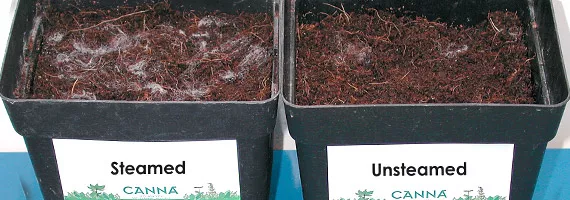
CANNA COCO: environmentally friendly & professional
CANNA COCO is a 100% natural grow and flowering medium, which has proven its value across years and years. CANNA, the coco pioneer from Holland, has played an important role in the current status of coco in horticulture. CANNA COCO is not only a high quality product, but also an honest and environmentally friendly product. For many years the raw material was considered waste material, and enormous useless “Coco Mountains” appeared in the landscapes of countries like Sri Lanka and India. By developing a special biological composting process this “waste” was transformed into a high quality product. This innovation was, and still is, an important contributor to the local economy of India and Sri Lanka. This and the unique growth characteristics ensure CANNA COCO is the medium of the moment and the future!

